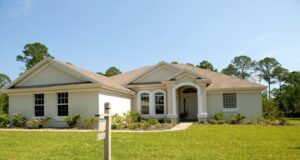AGC Looks at Developments in Green Community Programs: Day Five of Earth Week
WASHINGTON, D.C. – April 27, 2015 – (RealEstateRama) — AGC has celebrated Earth Day (officially April 22) all week long by releasing an article a day exploring how the construction industry contributes to building a green future. You can help us get the word out by linking to these articles via social media during “Earth Week.” AGC has explored green buildings, roads, infrastructure, and homes; this final article in the series brings all of these components together and looks at green communities.
So far, the articles in AGC’s Earth Week series have focused on the green attributes of specific types of construction projects. Green communities, however, are comprised of many projects – both public and private, with hundreds and thousands of distinct owners and stakeholders. At the community level, leaders must advance practices that look beyond building “green” and promote investments and decisions that will foster economic development, protect and conserve resources, and lead to prosperous and healthy citizens. For communities across the country, addressing these challenging decisions has increased interest in sustainable community programs to help weigh the choices and identify a path forward. AGC provides information on some of national as well as state and local green community programs in the sections below.
In reference to communities, the difference between green and sustainable becomes more pronounced: something that is green can aptly be called “environmentally friendly,” yet it is not always sustainable. Sustainability is commonly described as weighing and balancing the needs of the economy, environment, and equity. For the sake of consistency throughout the series, AGC continues to use the term green, and leaves the proof of sustainability to the certification programs.
As with other green programs that focus on a specific segment of the construction market, commonalities have emerged across the available green community programs that have been developed. The programs often provide options for government actions and incentives as well as goals for the community at large. Some of the issues addressed by a green community program are as follows: green public buildings and incentives for private green buildings and homes, green roads and streets, green infrastructure and public works programs, energy efficiency and renewable energy at a government level and incentives for private buildings, clean water resources and water conservation, curbside recycling, tree protection and maintenance, greenspaces, green business recognition and incentives, local economic development, community outreach and education, cultural and heritage considerations, as well as public health and wellbeing programs.
National Green Community Programs
- Blue Zones Community Certification – To become a Blue Zones Community, six community sectors must pledge and then act on their specific responsibilities. The six sectors include community leaders (policy pledge) and commitments from a percentage of the following: citizens, employers, restaurants, public schools, and grocery stores. Each sector has individual pledges and actions from which to choose, such as growing a garden or tobacco free work-sites and farm-to-school programs. Information courtesy of the Blue Zones Project(link is external).
- Building Healthy Places Initiative – Launched by the Urban Land Institute (ULI), this initiative provides a toolkit that communities and developers can use to factor health and sustainability into their projects. The toolkit offers 21 recommendations that promote (1) physical activity, (2) healthy food and drinking water, and (3) healthy environment and social well-being. Information courtesy of ULI(link is external).
- Global EcoDistricts Protocol – Originating in Portland, Ore., the Protocol tool rewards sustainable district-scale projects and focuses on equity, health and wellbeing, energy, water, identity, access and mobility, habitat and ecosystem function, and materials management. Currently a framework, EcoDistricts is exploring whether to develop the Protocol into a leadership reward and professional accreditation program. Information courtesy of EcoDistricts(link is external).
- Leadership in Energy and Environmental Design (LEED) for Neighborhood Development– Developed by the U.S. Green Building Council (USGBC), LEED for Neighborhood Development (ND) applies to neighborhood-scale projects near completion or completed within the past three years. Projects must meet prerequisites and a number of option credits to qualify for certification. The major categories are: smart location and linkage, neighborhood pattern and design, and green infrastructure and buildings. Credits are also available for innovation and regional priority. Information courtesy of USGBC(link is external).
- Living Community Challenge – A new certification program by the International Living Futures Institute (ILFI), the Living Community Challenge applies to community-scale projects, including street, block, corridor, small or large neighborhood, and campus projects. This challenge evaluates projects on 20 imperatives within seven major categories that it calls petals: place, water, energy, health and happiness, materials, equity, and beauty. There are two levels of certification: Living Community Certification and Petal Community Certification. Information courtesy of ILFI(link is external).
- One Planet Living – Communities Project – An international initiative developed by Bioregional, One Planet Living is structured around the development of action plans to address 10 principles: health and happiness, equity and local economy, culture and community, land use and wildlife, sustainable water, local and sustainable food, sustainable materials, sustainable transport, zero waste, and zero carbon. Annual progress reviews check the achievement of goals within the action plans. Information courtesy ofBioregional(link is external).
- STAR Communities Certification – Released in 2012, the STAR Community Rating System (STAR) is the first national certification program to recognize sustainable communities. Local leaders use STAR to assess their sustainability, set targets for moving forward, and measure progress along the way. The rating system is based on 44 objectives within seven categories called sustainability goal areas: built environment; climate and energy; economy and jobs; education, arts, and community; equity and empowerment; health and safety (including resiliency); and natural systems. There are three levels of certification: 3-STAR, 4-STAR, and 5-STAR; which last for three years (recertification is available). Information courtesy of STAR Communities(link is external).
Examples of State and Local Programs
- Atlanta Regional Commission’s (ARC) Certified Green Communities Program – Developed by the ARC, this is a voluntary certification program for communities in the 10-county Atlanta region. Local governments earn points in 10 categories with four levels of certification available. Recertification is required every four years in order to maintain status as a certified green community. Sixty-five points are available for government and community initiatives such as a community green building incentive, government energy and water audits, government no-idling policy, residential curbside recycling, greenspaces, and community gardens. Information courtesy of ARC(link is external).
- DowntownDC ecoDistrict – Washington, DC partnered with EcoDistricts (see above) in an initiative called “Target Cities” to advance district-scale sustainability work. The 138-block DowntownDC ecoDistrict Business Improvement District is part of that project as well as the District’s commitment to sustainability. Elements of DowntownDC include multiple green buildings, public transportation and a bike share system, greenspace, public recycling bins, a farmers market, and public workout days. Information courtesy ofDowntownDC(link is external).
- Sustainable Jersey Certified – Launched in 2009, Sustainable Jersey is a nonprofit that helps and certifies municipalities in New Jersey that want to go green. Currently, 177 are certified and 423 are participating in the program. Sustainable Jersey offers two certification levels: bronze and silver. Local governments can receive points in three broad categories: prosperity, planet, and people; by completing actions from a checklist. Some example actions are setting up a green business recognition program, establishing a farmland preservation plan, purchasing alternative fuel vehicles, protecting and maintaining trees, and promoting diversity. Information courtesy of Sustainable Jersey(link is external).
- Sustainable Pennsylvania Community Certification – This program recognizes local governments that employ sustainable policies and practices. Communities earn points towards certification for achieving a number of the 131 policies, actions and best practices identified as certification criteria. Depending on the amount of points achieved, certification is available to five levels: associate, bronze, silver, gold, and platinum. The criteria are organized by these main categories: governance and community engagement; healthy communities; diversity, equity, and inclusion; education; energy use, conservation, and green building; environmental stewardship; housing; land use and transportation; local economy; and innovation. Currently, 41 communities have received certification. Information courtesy of Sustainable Pennsylvania Community Certification(link is external).
AGC’s Earth Week Article Series
Read AGC’s article on green building programs for Earth Week Day 1 here.
Read AGC’s article on green road programs for Earth Week Day 2 here.
Read AGC’s article on green infrastructure programs for Earth Week Day 3 here.
Read AGC’s article on green residential programs for Earth Week Day 4 here.
AGC also reports on green or sustainability news through its @AGCEnvironment (link is external)Twitter account. AGC’s upcoming 2015 Contractors Environmental Conference on Sept. 2-3, 2015, will also feature sessions on green buildings, roads and other infrastructure, click here(link is external) for the conference details. For more information, contact AGC’s Melinda Tomaino at%20">(link sends e-mail) or (703) 837-5415














